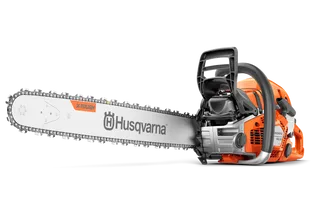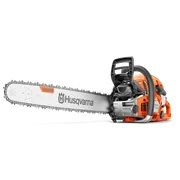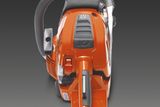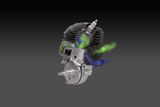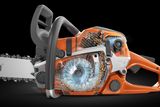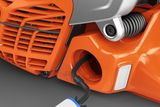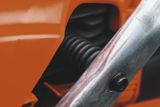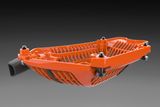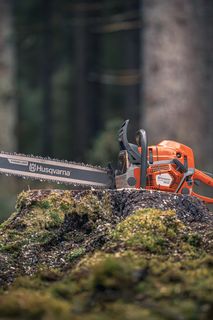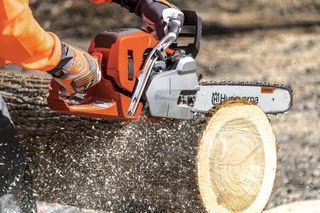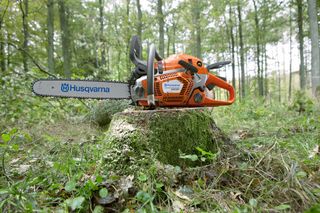1/6
59.8 cm³
Cylinder displacement
3.5 kW
Output shaft power1
21.4 m/s
Chain speed at max power (m/s)
What's included
What's included
Husqvarna 562 XP® Mark II - 970 66 35‑18
Included
- Nose typeSprocket nose
- SpikesMounted
- Chain typeC85
- Bar length (inch)18 in
High-performance 60cc chainsaw for professional hardwood forestry
Husqvarna 562 XP® G Mark II is a high-performance 60cc chainsaw, designed for professional hardwood forestry. For use with up to 28-inch guide bar. When you want the power of a large saw in a slim and agile body, this is one of our best petrol chainsaws. Featuring AutoTune 3.0 with Simple Start Technology, this chainsaw always starts easily and runs optimally in all conditions. The high-rev 60cc X-Torq® engine makes felling, limbing and bucking hardwood and large conifers easy.
Features
Features
Specifications
Specifications
Compare specifications and features with similar Husqvarna products.
Compare18" SN C85 Art no: 970 66 35‑18 | |
|---|---|
| Engine | 18" SN C85 Art no: 970 66 35‑18 |
| Chain speed at max power (m/s) | 21.4 m/s |
| Cylinder displacement | 59.8 cm³ |
Output shaft power1 | 3.5 kW |
| Equipment | |
| Recommended bar length, min | 38 cm |
| Chain pitch | 3/8" |
| Recommended bar length, max | 70 cm |
| Chain type | C85 |
| Bar length | 45 cm |
| Bar length (inch) | 18 in |
| Dimensions | |
| Weight (excl. cutting equipment) | 5.9 kg |
| Sound and noise | |
| Sound pressure level at operators ear | 107 dB(A) |
| Sound power level, guaranteed (LWA) | 118 dB(A) |
| Vibration | |
| Equivalent vibration level (ahv, eq) rear handle | 4.5 m/s² |
| Equivalent vibration level (ahv, eq) front handle | 4 m/s² |
| Emission | |
Exhaust emissions (CO₂ EU V)2 | 778 g/kWh |
Services
Services
Owner support
Owner support
Manuals, handbooks, spare parts, guides, and related information for 562 XP® Mark II can be found in the product support.
Product support for 562 XP® Mark IIDisclaimer:
- 1Output shaft power: Net power rating as per ISO 7293, at specified RPM
- 2Exhaust emissions (CO₂ EU V): This CO2 measurement results from testing over a fixed test cycle under laboratory conditions a(n) (parent) engine representative of the engine type (engine family) and shall not imply or express any guarantee of the performance of a particular engine.
